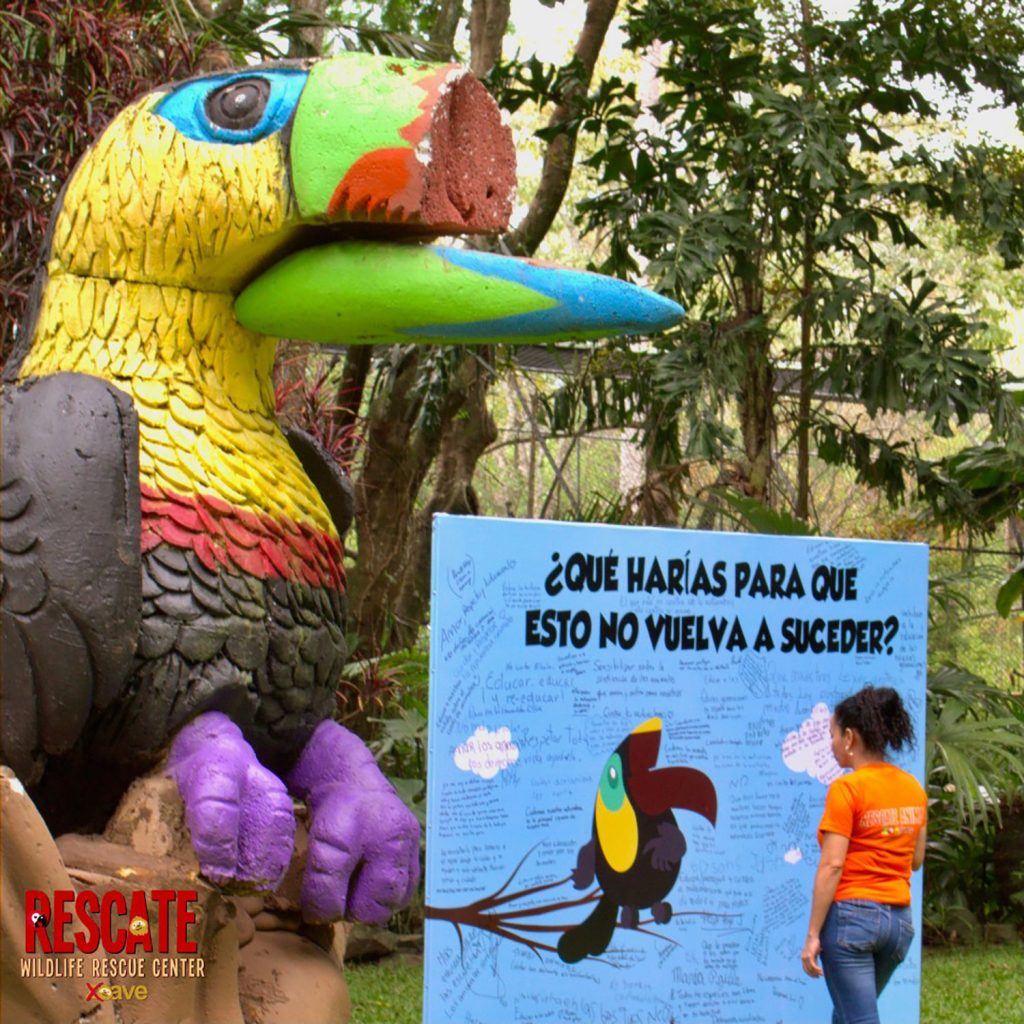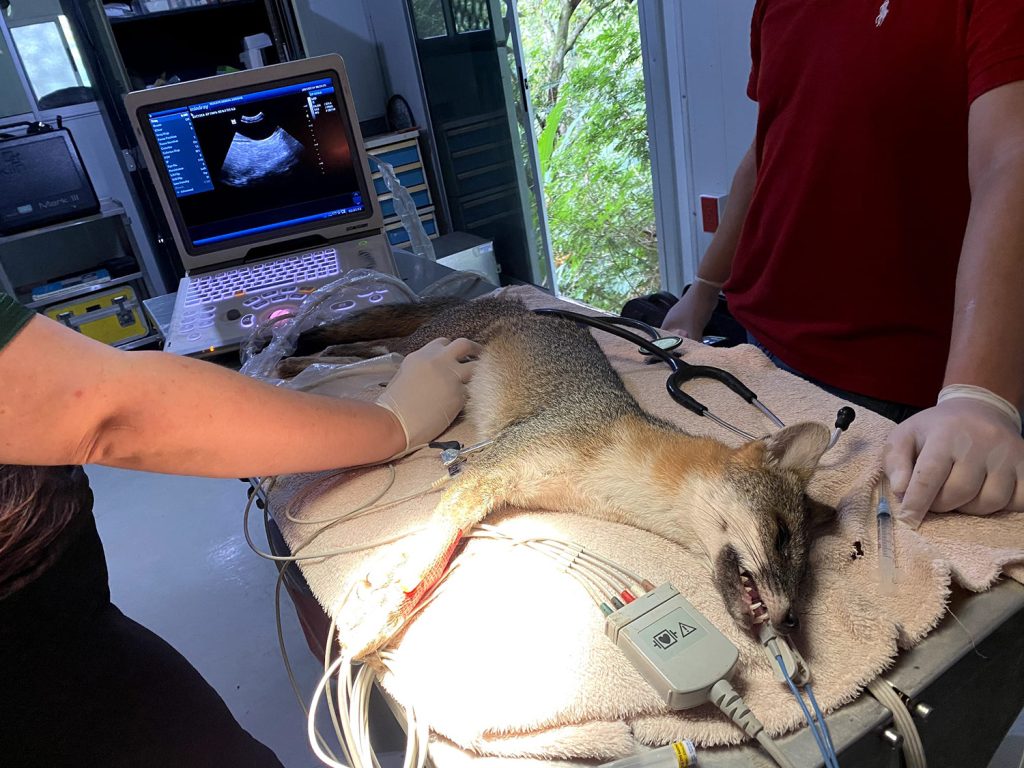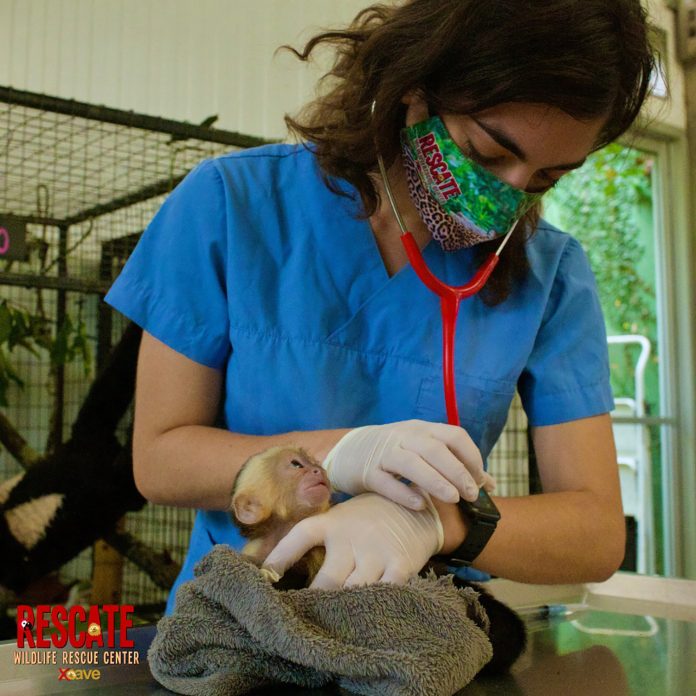Costa Rica is famous for its commitment to conservation and ecotourism—so most any wildlife sanctuary located here must be complying with strict animal welfare rules, right?
Not so fast. Travelers who plan to visit a wildlife sanctuary in Costa Rica should inform themselves carefully before planning a trip to make sure that their tourist dollars support ethical practices.
Esther Pomareda, regent biologist at Las Pumas Rescue Center and Sanctuary in Cañas, Guanacaste, says that the demand for interaction with animals has had dire consequences.
“It’s led [some centers] to prostitute our fauna. Since we’ve been sold as a green country… many facilities have taken advantage and charge for that, forgetting their primary objective. Animals that might have been freed are staying captive,” she says. “The opportunity and the objective of rehabilitating and releasing animals is being lost in many cases. There are management sites that have become animal collections.”
How can potential visitors figure out whether the facility they’re considering shows respect for animal welfare? Here are some steps to take before your visit—and what to do if you discover animal mistreatment once you’re already there.

Familiarize yourself with the correct terminology
Marta Venegas, regent biologist of Rescate Wildlife Center – Zooave, explains that Costa Rica’s Wildlife Conservation Law lays out clear categories for any facility that houses wild animals. (Her center made international headlines in 2015 when its team created a cutting-edge prosthetic beak for Grecia, a toucan who had lost a significant part of its beak after boys beat it with a stick. Grecia recovered much of his quality of life at the center, and died earlier this year of natural causes.)
The first of these categories is centros de rescate (rescue centers), whose primary objective is to rescue, rehabilitate and, whenever possible, release wild animals. No other type of facility is allowed to receive wild animals directly, and rescue centers must be completely closed to the public, Marta explains. This is because animals with the potential for release back into the wild must never come into contact with tourists and have minimal contact with center staff to enhance its odds of being able to return to the wild.
The second category is zoológicos (zoological facilities), which can be commercial or nonprofit, and both of which are allowed to receive visitors under strict conditions. For-profit zoos are allowed to buy and sell animals. Nonprofit zoos in Costa Rica are generally known as sanctuarios (sanctuaries) and are not allowed to buy or sell animals; they display animals who have been rescued or rehabilitated, but that cannot be released into the wild. Marta explains that this might be because the animal has a physical disability, an injury that prevents its survival in the wild, or behavioral issues. Since rescue centers can’t receive visitors and therefore have limited income potential, many facilities—including both Rescate Wildlife Center-Zooave, and Las Pumas—have a rescue center that is off-limits to tourists, and a sanctuary that’s open to visitors and can generate income to support animal rescue.
A third category is zoocriaderos (breeding centers), the only kind of facility where breeding between wild animals is permitted. These can operate for commercial purposes; for conservation purposes (that is, facilitating breeding among endangered species, for the sole purpose of liberation); or for artisanal purposes (for example, butterfly breeding centers). All categories are strictly regulated. If a sanctuary or rescue centers plans to allow animal breeding, Marta explains that it must submit a detailed management plan to add the category of breeding center to its permit, and show how it will prevent any contact between breeding animals and the public.

Ask about the management plan
Unfortunately, no updated online list of centers that comply with these requirements exists for travelers to consult, both Esther and Marta explain—so the onus is on the tourist to ask questions.
“It’s harder to know now because, with regulations in place, on [a center’s] website, you won’t see what they’re really doing,” Esther says. However, she adds that if any publicity for a center or tour implies that tourists or volunteers will be able to touch animals, for example, that’s an obvious red flag.
Marta says that tourists can also ask whether the center has an up-to-date management plan and operating permit from the National System of Conservation Areas (plan de manejo y permiso de funcionamiento vigente del SINAC). She also expresses the hope that a public and updated list will be made available to tourists soon.
Esther says she also hopes more of Costa Rica’s compliant facilities will seek accreditation from the Global Federation of Wildlife Sanctuaries, a step that could make it easier for visitors to find facilities that meet rigorous animal welfare requirements. At the time of publication, Las Pumas and Rescate-Zooave are the only sanctuaries in Costa Rica with GFAS accreditation. [Updated 4/22: Esther Pomareda advised El Colectivo 506 that she has confirmed that Kids Saving the Rainforest, in Quepos, has also been accredited, although it currently shows as verified but not accredited on the GFAS site.]
If you’re in contact with animals, something’s very wrong
For anyone who loves wild animals, the worst-case scenario at any animal facility is that an animal loses any possibility of surviving in the wild, where it belongs. (Marta says that when visitors ask if a certain animal enclosure is big enough, her answer is always “No!”—that is, no animal should ever be enclosed, so as a biologist, keeping any animal even in the most wonderful sanctuary is always a last resort.)
The most common behavioral problem that prevents release?
“It’s imprinting…the loss of fear of humans,” Marta says. Once an animal sees humans as a source of food or comfort, their door to release starts to close. That’s why both Marta and Esther express consternation at the fact that some facilities calling themselves rescue centers or sanctuaries allow humans to play with animals. Both biologists also reiterated a warning from last week’s piece on animal interaction during visits to Costa Rica—such close contact is dangerous not only for the animals, but for humans as well.
Need an example? The COVID-19 pandemic provides a clear one, both Esther and Marta point out. Diseases can be transmitted from animals to humans, and the potential for injury is also high.
“It’s forbidden to touch or manipulate wild animals, even if you’re a zoo,” says Marta. “As a tourist, you should never be allowed to touch an animal… and sometimes it’s complicated, because people want that.”
“Maybe in the United States they’re used to going to zoos and touching animals,” Esther says. “They expect to see the same here, and some places allow it to get that admission fee.”

Raise your voice—because animals can’t
“Animals don’t have a voice,” says Esther. Both she and Marta ask that travelers who come across violations of the law, or even anything that just doesn’t seem quite right, take advantage of their position as advocates.
As reported last week, you can call 1192, the environmental complaint line run by the Environment Ministry (MINAE). You can also file a complaint online through MINAE’s Integrated System of Environmental Complaints, SITADA, here. You can do this anonymously, although Marta points out that if you enter your contact information, you’ll receive updates as to what action was taken.
Don’t speak Spanish? El Colectivo 506 tried out the 1192 number this week to find out more about that issue: the response was immediate, and while the initial menu and live greeting are in Spanish, just ask for English and you’ll be transferred to the English speaker on staff. The SITADA site is also in Spanish, so if you can, ask for help from a Spanish speaker to understand the section headings. However, the 1192 operator assured us that a user can fill out the text fields entirely in English and again, an English speaker at MINAE will process the information.
(The SITABA headings read Type of Complaint, with a drop down menu from which, in this case, Biodiversidad/Vida Silvestre should be selected; Type of Infraction; Location Affected; Entity being Denounced; Address of the Infraction; and Description of the Infraction.)
Marta urges both international visitors and Costa Rican travelers to take advantage of both options: “It’s really good for us as ticos to get used to” speaking up.
The power of travelers to affect change is massive, Esther says: “They can be the jury, so to speak, on the animals’ treatment.”
Next week: How to select a wildlife sanctuary for your volunteer work in Costa Rica.







